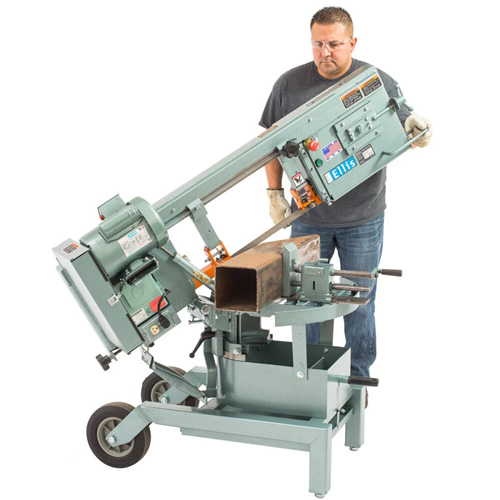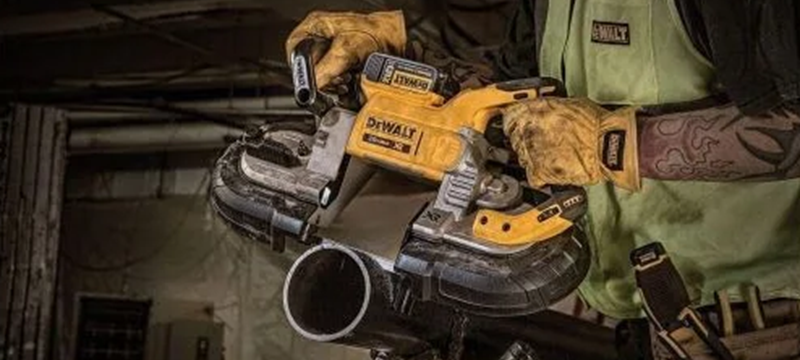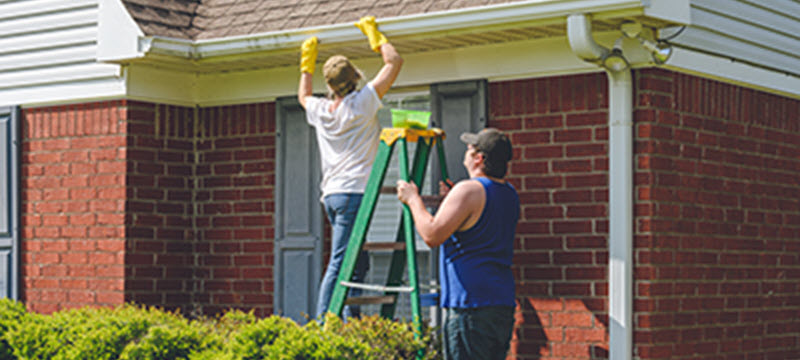From simplifying curve and circle cuts, resawing lumber to repurposing scrap wood, the bandsaw improves the functionality and productivity of your workshop. Whether you’re a beginner or an experienced woodworking enthusiast, this tool can be a godsend for your projects—if you use it properly and effectively. Let’s look at how you can make the make the most of your bandsaw, how to set it up, execute different cutting techniques, maintenance, and some bandsaw safety tips.
Understanding the Bandsaw
Anatomy of a Bandsaw
A bandsaw consists of several key components: the frame, table, blade, blade guides and the motor. The frame provides structural support and stabilizes the entire machine during operation. Mounted on the frame, the table serves as the work surface for guiding the material being cut. The heart of the bandsaw is the blade, a continuous loop of teeth made from various materials to suit different cutting purposes. Blade guides positioned above and below the table, help maintain the blade’s alignment and prevent wandering during cutting. Powering the tool is the motor that lets you set the speed and torque that you need for cutting.
Types of Bandsaws

Bandsaws come in various types, each designed for specific woodworking cuts.
- Benchtop bandsaws are compact and portable for small workshops or DIY projects. This type is easy to maneuver and convenient, while still providing you with versatile cutting.
- Floor-standing bandsaws are robust and powerful, suitable for professional woodshops and large-scale woodworking tasks. They feature larger motors, sturdier frames, and wider cutting capacities, making them ideal for resawing thick lumber and intricate cuts.
- Portable bandsaws, also known as handheld or cordless bandsaws, offer exceptional mobility for on-site cutting and are commonly used in metalworking and plumbing applications.
Selecting the Right Blade
You should consider several factors when choosing a blade. These include the material you are going to cut, the cut quality that you want, and the specific cutting technique that you will be using. Blade width, tooth pitch, and blade material are important considerations. For general-purpose cutting and smoother finishes on wood, a blade with higher teeth per inch (TPI) and a narrower width is preferred. Conversely, resawing or cutting thicker stock may require a blade with less TPI and a wider width for better chip removal and faster cutting. The tooth pattern, such as hook, skip, or raker, should be selected based on the specific cutting application.
Setting Up the Bandsaw
Setting up a bandsaw requires attention to detail and precision to ensure safe and efficient operation. The process involves setting the saw on a stable and level surface, adjusting the blade guide and thrust bearings, and aligning the blade. It is important to set the table at a correct height, check its guide and safety guard. Wearing safety gear such as goggles and ear protection helps you stay safe while operating the machine.
Blade Tensioning and Tracking
Proper bandsaw blade tensioning and tracking allow you to make precise and consistent cuts while prolonging blade life at the same time. Tensioning the blade involves adjusting the tension to an appropriate level, ensuring it is not too loose or too tight. An under-tensioned blade can result in wandering cuts and premature wear, while an over-tensioned blade can lead to excessive strain on the saw and potential damage.
To achieve optimal tension, the blade should have a slight deflection when pressed sideways at a point halfway between the wheels. Regular checks on the tension are important as the blade can stretch over time.
Tracking refers to keeping the blade centered on the saw’s wheels. Adjusting the tracking keeps the blade from drifting off course or rubbing against the guides, which can lead to blade damage and poor cutting performance. Fine adjustments can be made using the tracking knob or adjusting the position of the upper wheel.
Adjusting Blade Guides
Blade guides help to control lateral and horizontal movement of the blade. This ensures stability and accuracy as you make your cuts. Most bandsaws have two sets of guides: the upper and lower guides. The upper guides control the vertical movement of the blade, while the lower guides focus on the horizontal movement.
When adjusting the blade guides, ensure that they are properly aligned and near the blade, without causing excessive friction or binding. The guides should be adjusted to allow a small but sufficient gap between the blade and the guide blocks or bearings, typically around 1/32 to 1/16 of an inch. This gap allows for smooth blade movement while minimizing the risk of the blade deflecting or wandering during cuts.
Schedule a regular inspection and maintenance of the blade guides, as well as cleaning and applying lubrication to ensure smooth and accurate operation.
Aligning the Table
Aligning the bandsaw table ensures accurate and precise cuts. The table should be parallel to the blade’s path for smooth and consistent cuts. To align the table, loosen the locks or bolts that hold the table in place then use a square to check if the table is perpendicular to the blade’s vertical orientation. If adjustments are necessary, carefully tilt the table until it is perfectly square to the blade.
Once the table is aligned horizontally, re-tighten the locks or bolts to secure it in place. Check the table’s alignment in relation to the miter gauge slot. This can be done using a miter gauge or a known straight edge.
Bandsaw Safety Tips

As with any other cutting tool, prioritize safety when using a band saw to help prevent accidents and injuries.
- Always wear appropriate personal protective equipment, including safety goggles to protect your eyes from wood chips and sawdust, and ear protection to guard against noise.
- Avoid wearing loose clothing, jewelry, and tie back long hair away from the moving parts of the saw.
- Keep the work area well-lit and free from obstructions to promote clear visibility and safe maneuvering.
- Use push sticks or push blocks to guide the material through the saw, keeping your hands at a safe distance from the blade.
- When changing the blade or performing maintenance, ensure the machine is unplugged to avoid accidental starts.
- Always follow the manufacturer’s instructions and safety guidelines, including proper blade tensioning and blade guard usage, to minimize the risk of accidents.
- Make sure that you know where the emergency stop button is and understand how to use it.
- Whenever possible, review basic maintenance routines to keep your band saw in optimal condition.
Bandsaw Cutting Techniques
Band saws are versatile tools that can be used for a variety of cutting techniques. One common technique is the straight cut, where the material is guided along the fence or miter gauge to ensure a straight and precise cut. Resawing is another popular technique, which involves cutting a board into thinner slices. For a successful resaw, use a wide blade and adjust the tension and guides properly.
Curved cuts can be made using the band saw by carefully maneuvering the material along a pre-drawn pattern, taking advantage of the saw’s ability to cut perpendicular to the table. For intricate designs and shapes, the band saw can also be utilized for scroll cutting, allowing for detailed and decorative cuts.
The bandsaw can also be used for bevel cutting by tilting the table to the desired angle, enabling the creation of beveled edges and angles on the workpiece.
Bandsaw Maintenance and Troubleshooting
Regular maintenance tasks include cleaning the saw to remove sawdust and debris that can affect its operation and cause buildup over time. Lubricating the moving parts, such as the blade guides and wheel bearings, is also important to ensure smooth and efficient operation. Check the blade regularly and replace it if it shows signs of wear or damage. A dull or damaged blade will give you poor results and even lead to injuries.
If the blade is tracking poorly or not cutting straight, it might be an indication of an incorrect blade tension or misalignment of the guides. Adjusting the tension and realigning the guides will often resolve such issues. Excessive vibration during operation may be caused by an unbalanced wheel or loose components, which will also require inspection and adjustment. If the saw motor is not running or lacks power, check the power supply and electrical connections.
Maintain the recommended blade speed and feed rate according to the material being cut for optimal cutting efficiency and to prevent blade damage. By following a regular maintenance schedule, performing necessary adjustments, and promptly addressing any issues or malfunctions, you can ensure that your bandsaw remains in excellent working condition and consistently delivers accurate and clean cuts.
Your bandsaw is a powerful tool that can help you elevate your woodworking game. This guide should provide you with sufficient knowledge and confidence to use your tool effectively and safely for various cutting techniques. Remember that practice makes perfect, so take your time, start with simple projects, and gradually progress to more complex ones. With patience, experience, and proper maintenance, the bandsaw will become an indispensable tool in your workshop.




